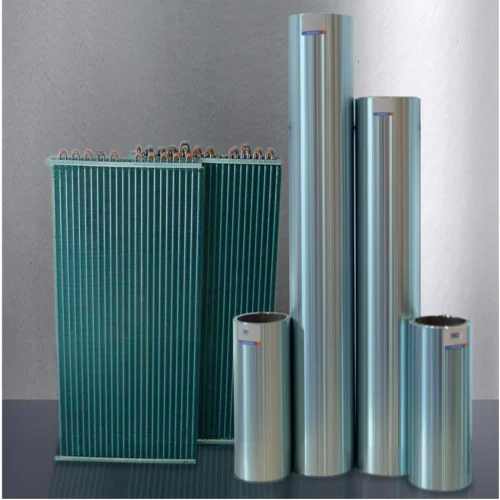Cigarette aluminum foil parameters Alloy: 3004 8001 Thickness: 0.018-0.2mm Length: can be customized according to customer needs Surface: One side has a high light emissivity, and the other side has a soft matt finish. what is the metallic paper in a cigarette box The metallic paper in cigarette packs is aluminum foil. One is to keep fragrance. Aluminum foil can prevent the smell of cigarette ...
What is AC aluminum foil? Air conditioning aluminum foil, often called AC foil or HVAC foil, is a type of aluminum foil used in the heating, ventilation and air conditioning (HVAC) industry. Air-conditioning aluminum foil is usually used to make heat-conducting fins for air-conditioning heat exchange and air-conditioning evaporators. It is one of the important alloys used in air conditioning manufacturing raw ma ...
What is 1200 alloy aluminum foil? 1200 alloy aluminum foil for industrial pure aluminum, plasticity, corrosion resistance, high electrical conductivity, and thermal conductivity, but low strength, heat treatment can not be strengthened, poor machinability. This is a high-strength aluminum material that can pass heat treatment, plastic strength under quenching and newly quenched states, and cold strength during s ...
Soft Temper Jumbo Aluminum Foil Roll Introduction Welcome to Huawei Aluminum, your trusted partner in the world of aluminum foil solutions. As a leading factory and wholesaler, we take pride in offering premium Soft Temper Jumbo Aluminum Foil Rolls that cater to a diverse range of industries and applications. With a commitment to quality and excellence, Huawei Aluminum stands as a beacon of reliability in the al ...
What is the aluminum foil of the burner cover? The aluminum foil cover for the burner head is aluminum foil cover used to protect the burner head. A burner refers to a flame nozzle used on a gas stove, gas stove, or other gas appliances, which is used to mix gas and air and ignite it to produce a flame. During long-term use, grease and dust may accumulate on the surface of the burner, which may affect the qua ...
Which 8000 series alloy is more suitable for alu alu foil? For alu alu foil, aluminum foil for pharmaceutical packaging, the selection of the base material needs to take into account factors such as the barrier properties, mechanical strength, processing performance and cost of the aluminum foil. The aluminum foil base material should have excellent moisture barrier, air barrier, light-shielding properties, and ...
Fire or explosion in aluminum foil rolling must meet three conditions: combustible materials, such as rolling oil, cotton yarn, hose, etc.; combustible materials, that is, oxygen in the air; fire source and high temperature, such as friction, electric sparks, static electricity, open flames, etc. . Without one of these conditions, it will not burn and explode. The oil vapor and oxygen in the air generated duri ...
As a metal material, aluminum foil is non-toxic, tasteless, has excellent electrical conductivity and light-shielding properties, extremely high moisture resistance, gas barrier properties, and its barrier performance is incomparable and irreplaceable by any other polymer materials and vapor-deposited films. of. Perhaps it is precisely because aluminum foil is a metal material completely different from plastic, i ...
Do you know "aluminum foil"? Definition of aluminum foil material What is aluminum foil material? Aluminum foil material is a material that is directly rolled into thin sheets using metal aluminum (aluminum plate with a certain thickness). Aluminum foil has the characteristics of soft texture, good ductility, and silver-white luster. It is widely used in many fields. The following is a detailed introduction t ...
What is household foil? Household foil, also called household aluminum foil and commonly referred to as aluminum foil, is a thin sheet of aluminum used for a variety of household purposes. It has become a must-have for many households due to its versatility, durability, and convenience. Household aluminum foil is usually made of aluminum alloy, which combines the characteristics of pure aluminum with the adva ...
Cast-rolled aluminum foil production process Aluminum liquid, aluminum ingot -> Smelt -> Continuous roll casting -> Winding -> Cast roll finished product Plain foil production process Plain foil -> Cast-rolled coil -> Cold rolled -> Foil rolling -> Slitting -> Annealing -> Plain foil finished product The manufacture of aluminum foil is similar to making pasta at home. A large b ...








